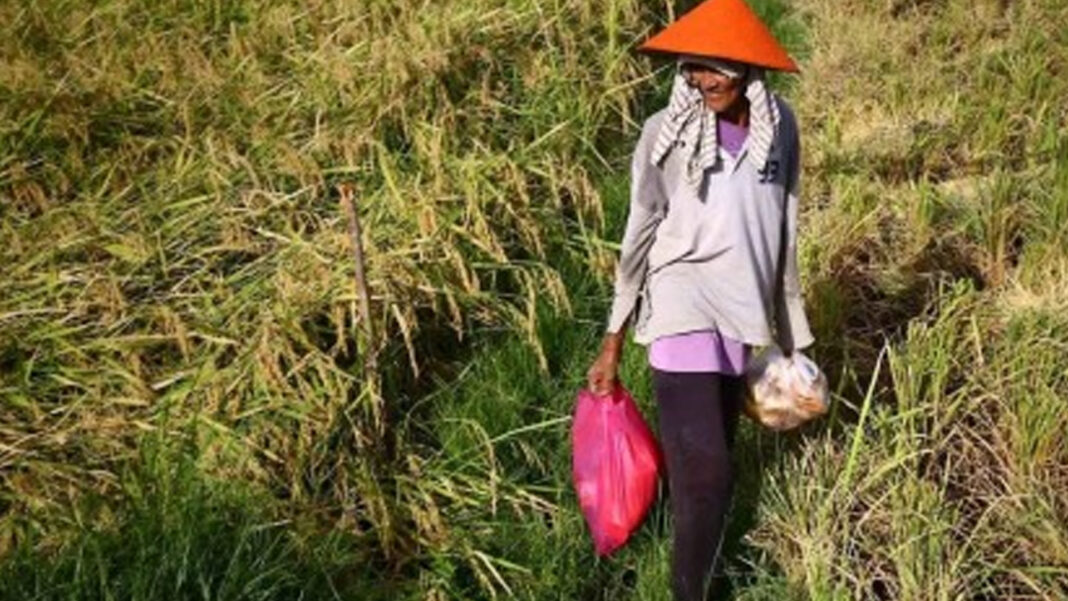The Department of Agriculture (DA) is set to conduct a study on the palay (unhusked rice) varieties that will match consumers’ preferences.
This came after Agriculture Secretary Francisco Tiu Laurel Jr. ordered the DA to address the reported low farmgate prices of wet palay in some areas due to the shifting preference of the Filipino market.
In a press briefing Monday, DA spokesperson Assistant Secretary Arnel de Mesa said they will include the quality of imported rice varieties in the study, as it gains a growing demand in the Philippines.
“Pag-aralan mabuti kung paano. Una kung ano iyong pinakamagandang variety na itanim talaga to match iyong mga (We need to carefully study the way. First, on what is the best variety to be planted to match the) quality,” he said.
De Mesa cited some of the top inbred rice varieties in Vietnam, which both possess high-yielding and good eating qualities, including OM18, OM5451, and Dai Thôm 8 (DT8).
The agriculture official explained that the Philippines also has good-eating quality rice varieties, but not relatively high-yielding, and vice versa.
“Iyong mga malalakas mag-ani pero hindi masyadong maganda iyong eating-quality, iyong 222 atsaka iyong RC10. Iyong 222, 35 percent ang tinaniman iyan. So iyon iyong pinakamarami (There are those which are high yielding but the eating quality is not that good, these are the 222 and RC10. The 222 has secured 35 percent of the total planting area. So that’s the biggest volume),” De Mesa said.
“So, kailangang i-match iyon. Hindi natin pwedeng i-sacrifice iyong (it needs to be matched. We cannot sacrifice the) quality and quantity and vice versa.”
Following the study on rice varieties, Tiu Laurel ordered the DA to educate farmers on planting high-yielding yet good-eating quality palay varieties.
The agency earlier said it targets to implement the measure in the next cropping season.
Increasing farmgate prices
De Mesa, meanwhile, reported that farmgate prices began increasing as the onset of harvest season nears alongside the impending rice import ban in September.
“May nakita rin ako na datos na dati mayroong 6 out of the 13 producing regions yung mayroong recorded na pagtaas, ngayon parang nadadagdagan pa ‘yung mga areas na nagre-report ng increases ng presyo ng palay (I saw a data that 6 out of 13 producing regions have recorded an increase, now it seems like more areas are reporting this upward trend in farmgate price of palay),” he said.
These include areas in Central Luzon, Southern Tagalog, Southern Mindanao, and Eastern Visayas, among others.
The National Food Authority (NFA), meanwhile, said that the average traders’ price in the farmgate is set at PHP14.3 per kg. of wet palay and PHP17.07 per kg. for clean and dry, as of Aug. 12.
This is higher than the PHP13 per kg. palay production cost according to the DA, but is still lower than the NFA’s buying price set at PHP17 per kg. for wet palay and PHP23 per kg. for dry palay under the flexible Price Range Scheme (PRICERS).
The highest traders’ price for wet palay, meanwhile, was reported in Bangsamoro Autonomous Region in Muslim Mindanao (BARMM) at PHP17.67 per kg.; followed by Central Mindanao at PHP16.25 per kg.; and Northern Mindanao at PHP16.13 per kg.
Other regions surpassing the PHP13 per kg. production cost include the Ilocos region, Western, Central, and Eastern Visayas, as well as Western and Southern Mindanao.
De Mesa maintained optimism that more areas will soon report increasing farmgate prices, as import arrivals are expected to be halted for 60 days.
“Marami talaga iyong palay, marami tayong ine-expect na darating. Tama iyong decision na ihinto muna pansamantala (The palay volume is high, we are expecting a huge harvest. The decision to ban rice imports is just right),” he said.
The DA projects at least 11 million metric tons (MT) of harvest for the wet season, which is set to peak from October to November. (PNA)


